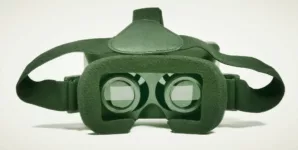Immersive technology hasn’t been a smooth-sailing ride, but it seems to have finally arrived at its intended destination. Several years of development now bear fruit as more businesses start to realize the potential of virtual and augmented reality, both in terms of generating more customers and improving workplace productivity.
The application of immersive tech started to pick up steam just a few years ago, with several companies promising to deliver a virtual reality headset. The most obvious use for such a headset was in the gaming industry, immersing the user in a virtual world and introducing a gaming experience unlike anything anyone has gone through before.
Today, companies have found new ways to use the technology. For one, many companies in the IT industry use holographic technology to conduct virtual meetings. This form of augmented reality continues to rise in popularity, thanks to the convenience it brings. Those that have yet to jump on the trend struggle with lack of understanding about how the technologies can be scaled. This infographic by MDG Advertising, Virtual and Augmented Reality: What Brands Need to Know, does a good job of explaining how businesses can start using immersive technology in their marketing efforts.
Many are still on the fence regarding the use of immersive technology. It’s still in its early stages of development, and no study can adequately gauge its effectiveness in marketing as of now. In addition, many companies that use the technology in limited form do not get anything of value right now, aside from showcasing to consumers that they are ready to adopt the new technology. Oddly enough, this might just be the thing that pushes more companies to get into virtual reality.
Thanks to an increasing number of businesses that share their experiences with immersive tech, more companies are getting interested in its applications. For one, it offers the potential of transforming how employees get in touch with experts. Imagine a repair technician being able to communicate with an expert and show exactly what the problem is. This can elevate the quality of work while minimizing the overhead costs of companies.
Virtual training is another promising field for the application of VR. Companies can train would-be employees without meeting them face-to-face. The same goes for online education, which has garnered extreme popularity over the past few years. Teachers can now mimic a traditional classroom setting and conduct their classes with their online students.
The increasing usage of virtual and augmented reality technologies has also created a new support industry. There are now companies that offer analytics to companies that use immersive technology. This helps in optimizing their product while learning how customers move through their applications.
The digital era has made the world much smaller; and now, immersive technology brings us a whole new world to explore. The adoption of virtual and augmented reality by several brands is a clear indication that it’s the future of technology. It’s only a matter of time before everyone gears up with a fancy headset and immerses in virtual reality.








